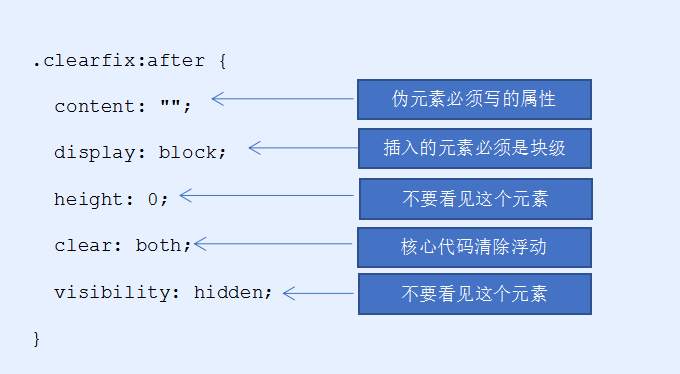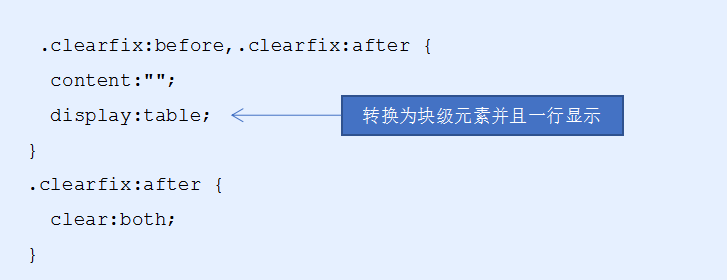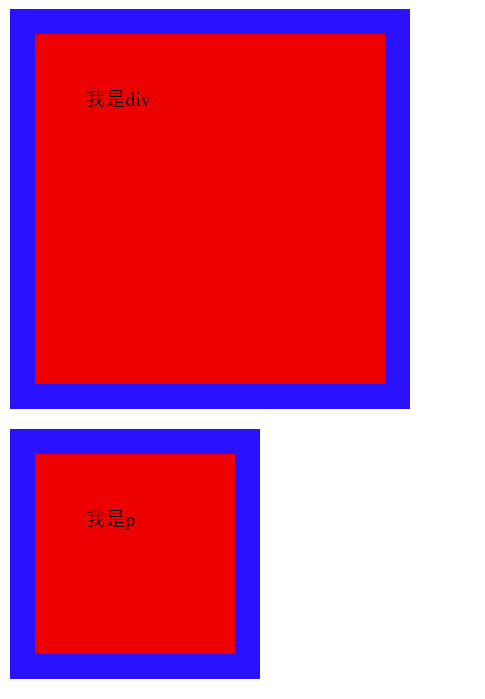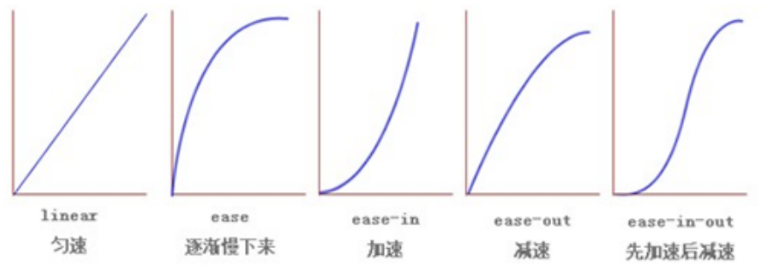1.CSS3新增选择器
1.1 属性选择器(★★)
属性选择器,按照字面意思,都是根据标签中的属性来选择元素
| 选择器 | 示例 | 描述 |
|---|---|---|
[attr] | [target] | 选择带有target属性的元素 |
[attr=value] | [target=_blank] | 选择target="_blank"的元素 |
[attr~=value] | [title~=flower] | 选择title属性包含单词"flower"的元素 |
[attr|=value] | [lang|=en] | 选择lang属性值以"en"开头的元素 |
[attr^=value] | a[href^="https"] | 选择href属性值以"https"开头的元素 |
[attr$=value] | a[href$=".pdf"] | 选择href属性值以".pdf"结尾的元素 |
[attr*=value] | a[href*="w3school"] | 选择href属性值包含"w3school"的元素 |
示例代码
<!DOCTYPE html>
<html lang="en">
<head>
<meta charset="UTF-8">
<meta name="viewport" content="width=device-width, initial-scale=1.0">
<title>Document</title>
<style>
input[value^=请] {
color: blue;
}
</style>
</head>
<body>
<input type="text" value="请ba输入用户名">
<input type="text" value="a请输入">
</body>
</html>- 属性选择器,按照字面意思,都是根据标签中的属性来选择元素
- 属性选择器可以根据元素特定属性的来选择元素。 这样就可以不用借助于类或者id选择器
- 属性选择器也可以选择出来自定义的属性
- 注意: 类选择器、属性选择器、伪类选择器,权重为 10。
1.2 结构伪类选择器
结构伪类选择器主要根据文档结构来选择器元素, 常用于根据父级选择器里面的子元素
| 选择器 | 示例 | 描述 |
|---|---|---|
:first-child | p:first-child | 选择属于父元素中第一个子元素的p元素 |
:last-child | p:last-child | 选择属于父元素中最后一个子元素的p元素 |
:nth-child(n) | li:nth-child(2) | 选择属于父元素中第2个子元素的li元素 |
:first-of-type | p:first-of-type | 选择属于父元素中第一个p元素 |
:last-of-type | p:last-of-type | 选择属于父元素中最后一个p元素 |
:nth-of-type(n) | p:nth-of-type(2) | 选择属于父元素中第2个p元素 |
:nth-last-child(n) | li:nth-last-child(2) | 选择属于父元素中倒数第2个子元素的li元素 |
:only-child | p:only-child | 选择属于父元素中唯一子元素的p元素 |
:nth-last-of-type(n) | p:nth-last-of-type(2) | 选择属于父元素中倒数第2个p元素 |
:only-of-type | p:only-of-type | 选择属于父元素中唯一类型的p元素 |
1.2.1 E:first-child/last-child
匹配父元素的第一个子元素E
<!DOCTYPE html>
<html lang="en">
<head>
<meta charset="UTF-8">
<meta name="viewport" content="width=device-width, initial-scale=1.0">
<title>Document</title>
<style>
ul li:first-child {
background-color: plum;
}
ul li:last-child {
background-color: plum;
}
</style>
</head>
<body>
<ul>
<li>1</li>
<li>2</li>
<li>3</li>
<li>4</li>
<li>5</li>
<li>6</li>
<li>7</li>
<li>8</li>
</ul>
</body>
</html>
1.2.2 E:nth-child(n)(★★★)
匹配到父元素的第n个元素
- 匹配到父元素的第2个子元素
ul li:nth-child(2){}
<!DOCTYPE html>
<html lang="en">
<head>
<meta charset="UTF-8">
<meta name="viewport" content="width=device-width, initial-scale=1.0">
<title>Document</title>
<style>
ul li:nth-child(2) {
background-color: plum;
}
</style>
</head>
<body>
<ul>
<li>1</li>
<li>2</li>
<li>3</li>
<li>4</li>
<li>5</li>
<li>6</li>
<li>7</li>
<li>8</li>
</ul>
</body>
</html>
- 匹配到父元素的序号为奇数的子元素
ul li:nth-child(odd){}odd 是关键字 奇数的意思(3个字母)
<!DOCTYPE html>
<html lang="en">
<head>
<meta charset="UTF-8">
<meta name="viewport" content="width=device-width, initial-scale=1.0">
<title>Document</title>
<style>
ul li:nth-child(odd) {
background-color: plum;
}
</style>
</head>
<body>
<ul>
<li>1</li>
<li>2</li>
<li>3</li>
<li>4</li>
<li>5</li>
<li>6</li>
<li>7</li>
<li>8</li>
</ul>
</body>
</html>
- 匹配到父元素的序号为偶数的子元素
ul li:nth-child(even){}even(4个字母)
<!DOCTYPE html>
<html lang="en">
<head>
<meta charset="UTF-8">
<meta name="viewport" content="width=device-width, initial-scale=1.0">
<title>Document</title>
<style>
ul li:nth-child(even) {
background-color: plum;
}
</style>
</head>
<body>
<ul>
<li>1</li>
<li>2</li>
<li>3</li>
<li>4</li>
<li>5</li>
<li>6</li>
<li>7</li>
<li>8</li>
</ul>
</body>
</html>
- 匹配到父元素的前3个子元素
ul li:nth-child(-n+3){}
选择器中的 n 是怎么变化的呢?
因为 n是从 0 ,1,2,3.. 一直递增
所以 -n+3 就变成了- n=0 时 -0+3=3
- n=1时 -1+3=2
- n=2时 -2+3=1
- n=3时 -3+3=0
- ...
<!DOCTYPE html>
<html lang="en">
<head>
<meta charset="UTF-8">
<meta name="viewport" content="width=device-width, initial-scale=1.0">
<title>Document</title>
<style>
ul li:nth-child(-n+3) {
background-color: plum;
}
</style>
</head>
<body>
<ul>
<li>1</li>
<li>2</li>
<li>3</li>
<li>4</li>
<li>5</li>
<li>6</li>
<li>7</li>
<li>8</li>
</ul>
</body>
</html>
一些常用的公式: 公式不是死的,在这里列举出来让大家能够找寻到这个模式,能够理解代码,这样才能写出满足自己功能需求的代码
| 公式 | 说明 | 示例 |
|---|---|---|
nth-child(n) | 选择第n个子元素 | li:nth-child(2) |
nth-child(odd) | 选择所有奇数子元素 | li:nth-child(odd) |
nth-child(even) | 选择所有偶数子元素 | li:nth-child(even) |
nth-child(-n+3) | 选择前3个子元素(包含第三个) | li:nth-child(-n+3) |
nth-child(n+3) | 选择第3个开始之后的子元素(包含第三个) | li:nth-child(-n+3) |
nth-child(2n) | 选择所有偶数子元素 | li:nth-child(2n) |
nth-child(2n+1) | 选择所有奇数子元素 | li:nth-child(2n+1) |
nth-child(3n) | 选择每第3个子元素 | li:nth-child(3n) |
nth-child(3n+1) | 选择从第1个开始的每第3个子元素 | li:nth-child(3n+1) |
1.2.3 E:nth-child 与 E:nth-of-type 的区别
这里只讲明 E:nth-child(n) 和 E:nth-of-type(n) 的区别 剩下的 E:first-of-type E:last-of-type E:nth-last-of-type(n) 同理做推导即可
<!DOCTYPE html>
<html lang="en">
<head>
<meta charset="UTF-8">
<meta name="viewport" content="width=device-width, initial-scale=1.0">
<title>Document</title>
<style>
ul li:nth-child(2){
/* 字体变成红色 */
color: red;
}
ul li:nth-of-type(2){
/* 背景变成绿色 */
background-color: green;
}
</style>
</head>
<body>
<ul>
<li>列表项一</li>
<p>乱来的p标签</p>
<li>列表项二</li>
<li>列表项三</li>
<li>列表项四</li>
</ul>
</body>
</html>
也就是说:
E:nth-child(n)匹配父元素的第n个子元素E,也就是说,nth-child 对父元素里面所有孩子排序选择(序号是固定的)先找到第n个孩子,然后看看是否和E匹配E:nth-of-type(n)匹配同类型中的第n个同级兄弟元素E,也就是说,对父元素里面指定子元素进行排序选择。 先去匹配E ,然后再根据E 找第n个孩子
1.2.4 总结
- 结构伪类选择器一般用于选择父级里面的第几个孩子
- nth-child 对父元素里面所有孩子排序选择(序号是固定的)先找到第n个孩子,然后看看是否和E匹配
- nth-of-type 对父元素里面指定子元素进行排序选择。 先去匹配E ,然后再根据E 找第n个孩子
- 关于 nth-child(n) 我们要知道 n 是从 0 开始计算的,要记住常用的公式
- 如果是无序列表,我们肯定用 nth-child 更多
- 类选择器、属性选择器、伪类选择器,权重为 10
1.3 伪元素选择器(★★★)
伪元素选择器可以帮助我们利用CSS创建新标签元素,而不需要HTML标签,从而简化HTML结构
| 伪元素选择器 | 说明 | 示例 |
|---|---|---|
::before | 在元素内容前插入内容 | p::before { content: "→ "; } |
::after | 在元素内容后插入内容 | p::after { content: " ←"; } |
::first-letter | 选择元素内容的第一个字母 | p::first-letter { font-size: 2em; } |
::first-line | 选择元素内容的第一行 | p::first-line { font-weight: bold; } |
::selection | 选择用户选中的内容 | ::selection { background: yellow; } |
示例代码
<!DOCTYPE html>
<html lang="en">
<head>
<meta charset="UTF-8">
<meta name="viewport" content="width=device-width, initial-scale=1.0">
<title>Document</title>
<style>
div {
height: 100px;
width: 100px;
background-color: pink;
}
div::before {
content: '我';
}
div::after {
content: '人';
}
</style>
</head>
<body>
<div>是</div>
</body>
</html>- before 和 after 创建一个元素,但是属于行内元素,添加高度宽度不生效,可以转换成其他元素添加
- 新创建的这个元素在文档树中是找不到的,所以我们称为伪元素
- 语法:
element::before {} - before 和 after 必须有 content 属性
- before 在父元素内容的前面创建元素,after 在父元素内容的后面插入元素
- 伪元素选择器和标签选择器一样,权重为 1
- content必须写,并且值要带
''
1.3.1 应用场景一: 字体图标
在实际工作中,字体图标基本上都是用伪元素来实现的,好处在于我们不需要在结构中额外去定义字体图标的标签,通过content属性来设置字体图标的编码
步骤:
- 结构中定义div盒子
- 在style中先申明字体 @font-face
- 在style中定义after伪元素 div::after
- 在after伪元素中 设置content属性,属性的值就是字体编码
- 在after伪元素中 设置font-family的属性
- 利用定位的方式,让伪元素定位到相应的位置;记住定位口诀:子绝父相
<!DOCTYPE html>
<html lang="en">
<head>
<meta charset="UTF-8">
<meta name="viewport" content="width=device-width, initial-scale=1.0">
<title>Document</title>
<style>
@font-face {
font-family: 'icomoon';
src: url('fonts/icomoon.eot?9ahkcb');
src: url('fonts/icomoon.eot?9ahkcb#iefix') format('embedded-opentype'),
url('fonts/icomoon.ttf?9ahkcb') format('truetype'),
url('fonts/icomoon.woff?9ahkcb') format('woff'),
url('fonts/icomoon.svg?9ahkcb#icomoon') format('svg');
font-weight: normal;
font-style: normal;
font-display: block;
}
div {
position: relative;
height: 35px;
width: 200px;
border: 1px solid red;
}
div::after {
position: absolute;
top: 5px;
right: 10px;
font-family: 'icomoon';
content: '';
font-size: 20px;
color: red;
}
</style>
</head>
<body>
<div></div>
</body>
</html>1.3.2 应用场景二: 仿土豆效果
把之前的代码进行了改善
步骤:
- 找到之前写过的仿土豆的结构和样式,拷贝到自己的页面中
- 删除之前的mask遮罩
- 在style中,给大的div盒子(类名叫tudou的),设置 before伪元素
- 这个伪元素充当的是遮罩的角色,所以我们不用设置内容,但是需要设置content属性,属性的值为空字符串
- 给这个遮罩设置宽高,背景颜色,默认是隐藏的
- 当鼠标移入到 div盒子时候,让遮罩显示,利用 hover 来实现
<!DOCTYPE html>
<html lang="en">
<head>
<meta charset="UTF-8">
<meta name="viewport" content="width=device-width, initial-scale=1.0">
<title>Document</title>
<style>
.tudou {
position: relative;
width: 444px;
height: 320px;
background-color: pink;
margin: 0 auto;
}
.tudou img {
height: 100%;
width: 100%;
}
.tudou::before {
content: '';
position: absolute;
display: none;
top: 0;
left: 0;
width: 100%;
height: 100%;
background: rgba(0, 0, 0, .3) url(arr.png) no-repeat center;
}
.tudou:hover::before {
display: block;
}
</style>
</head>
<body>
<div class="tudou">
<img src="tudou.jpg" alt="">
</div>
<div class="tudou">
<img src="tudou.jpg" alt="">
</div>
<div class="tudou">
<img src="tudou.jpg" alt="">
</div>
</body>
</html>1.3.3 应用场景三: 清除浮动
回忆一下清除浮动的方式:
- 额外标签法也称为隔墙法,是 W3C 推荐的做法。
- 父级添加 overflow 属性
- 父级添加after伪元素
- 父级添加双伪元素
额外标签法也称为隔墙法,是 W3C 推荐的做法
注意: 要求这个新的空标签必须是块级元素
后面两种伪元素清除浮动算是第一种额外标签法的一个升级和优化

2.盒子模型(★★★)
CSS3中可以通过box-sizing来指定盒模型,有2个值: 即可指定为 content-box、border-box,这样我们计算盒子大小的方式就发生了改变
可以分成两种情况:
box-sizing: content-box盒子大小为 width + padding + border (以前默认的)box-sizing: border-box盒子大小为 width
如果盒子模型我们改为了box-sizing: border-box , 那padding和border就不会撑大盒子了(前提padding和border不会超过width宽度)
<!DOCTYPE html>
<html lang="en">
<head>
<meta charset="UTF-8">
<meta name="viewport" content="width=device-width, initial-scale=1.0">
<title>Document</title>
<style>
div {
width: 200px;
height: 200px;
background-color: red;
border: 20px solid blue;
padding: 40px;
}
p {
width: 200px;
height: 200px;
background-color: red;
border: 20px solid blue;
padding: 40px;
box-sizing: border-box;
}
</style>
</head>
<body>
<div>我是div</div>
<p>我是p</p>
</body>
</html>
3.其他特性(★)
3.1 图标变模糊--CSS3滤镜filter
filter CSS属性将模糊或颜色偏移等图形效果应用于元素 语法:
filter: 函数(); --> 例如: filter: blur(5px); --> blur模糊处理 数值越大越模糊
<!DOCTYPE html>
<html lang="en">
<head>
<meta charset="UTF-8">
<meta name="viewport" content="width=device-width, initial-scale=1.0">
<title>Document</title>
<style>
img {
width: 200px;
height: 200px;
filter: blur(5px);
}
</style>
</head>
<body>
<img src="R-C.jpg" alt="">
</body>
</html>
3.2 计算盒子宽度--calc 函数
calc()此CSS函数让你在声明CSS属性值时执行一些计算
语法:
width: calc(100% - 80px);括号里面可以使用+ - * /来进行计算
<!DOCTYPE html>
<html lang="en">
<head>
<meta charset="UTF-8">
<meta name="viewport" content="width=device-width, initial-scale=1.0">
<title>Document</title>
<style>
.father {
width: 200px;
height: 200px;
background-color: red;
}
.son {
width: calc(100% - 50px);
height: calc(100% - 50px);
background-color: blueviolet;
}
</style>
</head>
<body>
<div class="father">
<div class="son"></div>
</div>
</body>
</html>4.CSS3 过渡(★★★)
过渡(transition)是CSS3中具有颠覆性的特征之一,我们可以在不使用 Flash 动画或 JavaScript 的情况下,当元素从一种样式变换为另一种样式时为元素添加效果。
过渡动画: 是从一个状态 渐渐的过渡到另外一个状态
可以让我们页面更好看,更动感十足,虽然 低版本浏览器不支持(ie9以下版本)但是不会影响页面布局。
我们现在经常和:hover一起 搭配使用。
语法:
transition: <!-- 要过渡的属性 花费时间 运动曲线 何时开始;-->- 属性: 想要变化的 css 属性, 宽度高度 背景颜色 内外边距都可以 。如果想要所有的属性都变化过渡,写一个all 就可以
- 花费时间: 单位是 秒(必须写单位)比如 0.5s
- 运动曲线: 默认是 ease(可以省略)
- 何时开始: 单位是秒(必须写单位)可以设置延迟触发时间 默认是0s(可以省略)
- 后面两个属性可以省略
- 记住过渡的使用口诀: 谁做过渡给谁加

<!DOCTYPE html>
<html lang="en">
<head>
<meta charset="UTF-8">
<meta name="viewport" content="width=device-width, initial-scale=1.0">
<title>Document</title>
<style>
div {
height: 200px;
width: 200px;
background-color: pink;
transition: all 0.5s;
}
div:hover {
height: 400px;
width: 300px;
}
</style>
</head>
<body>
<div></div>
</body>
</html>
4.1 过渡练习
用过渡效果制作一个进度条 步骤:
- 创建两个div的盒子,属于的嵌套关系,外层类名叫 bar,里层类名叫 bar_in
- 给外层的bar 这个盒子设置边框,宽高,圆角边框
- 给里层的bar_in 设置 初试的宽度,背景颜色,过渡效果
- 给外层的 bar 添加 hover事件,当触发了hover事件 让里层的bar_in 来进行宽度的变化
<!DOCTYPE html>
<html lang="en">
<head>
<meta charset="UTF-8">
<meta name="viewport" content="width=device-width, initial-scale=1.0">
<title>Document</title>
<style>
.box {
height: 20px;
width: 200px;
border: 1px solid red;
border-radius: 10px;
padding: 1px;
}
.box_in {
height: 100%;
width: 50%;
background-color: red;
border-radius: 10px;
transition: all .5s;
}
.box:hover .box_in {
width: 100%;
}
</style>
</head>
<body>
<div class="box">
<div class="box_in"></div>
</div>
</body>
</html>
